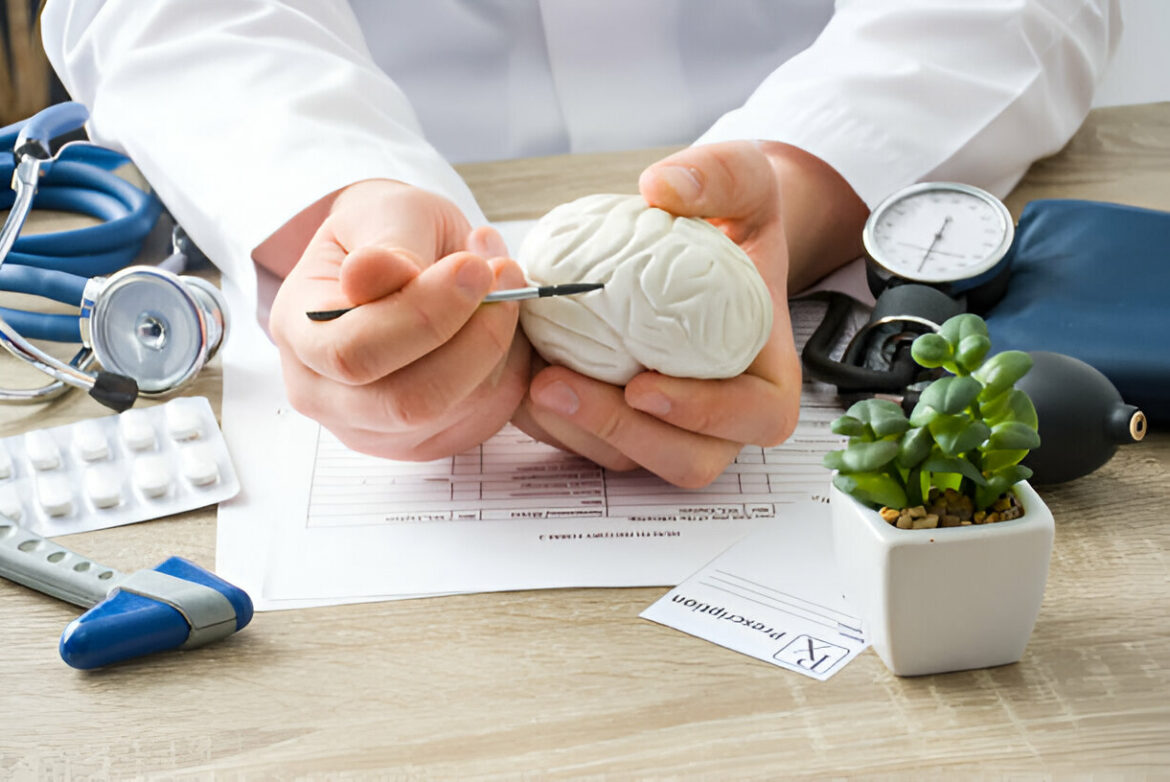Specialized physiotherapy services for stroke rehabilitation, aiming to restore and maximize physical function.
Introduction
Located in the vibrant hub of Chandigarh, Brar’s Physio Care serves as a beacon of hope and healing for countless individuals. This advanced facility, led by the renowned Dr. Lakhveer Singh, is celebrated as the best physiotherapist in Chandigarh.
Patients walk in with stories of despair and leave with renewed vigor, thanks to the specialized care and personalized treatment plans that Brar’s Physio Care provides. For individuals recovering from a stroke, this clinic offers a lifeline, guiding them through a journey of physical restoration and functional maximization.
The Importance of Specialized Physiotherapy for Stroke Rehabilitation
Stroke remains a leading cause of disability worldwide, affecting millions each year. In India alone, approximately 1.8 million people suffer from strokes annually, with a significant portion left with varying degrees of disability. Stroke rehabilitation, therefore, becomes crucial in helping these individuals regain their independence and quality of life.

The Role of Physiotherapy in Stroke Rehabilitation:
Physiotherapy plays a vital role in stroke rehabilitation, focusing on the following key areas:
- Restoring Mobility:
-
- Post-stroke, many patients experience paralysis or muscle weakness, primarily on one side of the body. Specialized physiotherapy techniques such as gait training, strength exercises, and balance training are critical. These interventions help regain mobility and improve the ability to perform daily activities.
- Enhancing Functional Independence:
- Functional independence is the ultimate goal of stroke rehabilitation. Physiotherapists work on improving the patient’s ability to perform tasks such as walking, dressing, and eating independently. Techniques like task-specific training and adaptive equipment training are often used.
- Improving Balance and Coordination:
- Balance and coordination are often impaired following a stroke. Physiotherapists use exercises that target the vestibular system and proprioception, helping patients regain their balance and prevent falls.
- Reducing Spasticity and Pain:
- Spasticity, or muscle stiffness, is a common issue after a stroke. Physiotherapists employ techniques such as stretching, splinting, and the use of modalities like heat or cold therapy to reduce spasticity and alleviate pain.
- Promoting Neuroplasticity:
- The brain’s ability to reorganize itself by forming new neural connections, known as neuroplasticity, is a cornerstone of stroke recovery. Physiotherapy promotes neuroplasticity through repetitive, task-specific exercises that encourage the brain to “relearn” lost functions.
Scientific Evidence Supporting Physiotherapy in Stroke Rehabilitation
Numerous studies underscore the efficacy of physiotherapy in stroke rehabilitation:
- A study published in the Journal of Rehabilitation Research and Development found that intensive physiotherapy significantly improved motor recovery in stroke patients. The study highlighted that patients receiving early and regular physiotherapy showed better functional outcomes compared to those who did not.
- Research from the American Heart Association indicates that stroke patients who engage in structured physiotherapy programs are more likely to regain functional independence. The study emphasized the importance of personalized rehabilitation plans tailored to the specific needs of each patient.
- Data from the Indian Journal of Physiotherapy and Occupational Therapy revealed that stroke patients participating in physiotherapy programs experienced notable improvements in mobility, balance, and overall quality of life. The research supported the critical role of physiotherapists in facilitating recovery and promoting long-term health.
Brar’s Physio Care: Leading the Way in Stroke Rehabilitation
At Brar’s Physio Care, the approach to stroke rehabilitation is comprehensive and patient-centric. Dr. Lakhveer Singh and his team employ a range of advanced techniques and tools to facilitate recovery:
- Customized Treatment Plans: Each patient receives a personalized rehabilitation plan that addresses their unique challenges and goals. This individualized approach ensures optimal recovery and functional improvement.
- Advanced Techniques: Brar’s Physio Care utilizes advanced techniques such as robotic-assisted therapy, virtual reality training, and neuromuscular electrical stimulation to enhance rehabilitation outcomes.
- Holistic Care: The clinic adopts a holistic approach, incorporating not just physical therapy but also occupational therapy, speech therapy, and psychological support to address all aspects of stroke recovery.
- Continuous Monitoring and Adjustment: The progress of each patient is closely monitored, and treatment plans are regularly adjusted based on their evolving needs and improvements.
Based on general knowledge about advanced physiotherapy techniques, here are some specific types of robotic-assisted therapy, virtual reality training, and neuromuscular electrical stimulation that are commonly used in stroke rehabilitation, which Brar’s Physio Care might employ:
Robotic-Assisted Therapy
- Lokomat:
-
- A robotic gait training device that helps patients regain their walking ability. It provides body weight support and controls the movement of the legs, allowing repetitive and precise walking practice.
- Armeo:
- An exoskeleton system designed for upper limb rehabilitation. It assists patients in performing arm and hand movements, helping to improve motor function and strength.
- ReoGo:
- A robotic arm therapy device that guides the patient through various arm movements, improving coordination and muscle strength.
Virtual Reality Training
- VR Balance Training:
-
- Virtual reality systems that simulate different environments to help patients practice balance and coordination. These systems often include tasks and games that require the patient to maintain stability and react to virtual stimuli.
- Hand and Arms Training with VR:
- Virtual reality exercises focused on hand and arm movements. These exercises are designed to improve dexterity, strength, and range of motion through interactive and engaging virtual environments.
- NeuroGaming:
- It has gamified rehabilitation programs that use virtual reality to motivate patients through fun and challenging tasks that target specific motor skills and cognitive functions.
Neuromuscular Electrical Stimulation (NMES)
- Functional Electrical Stimulation (FES):
-
- A type of NMES that stimulates muscles to perform functional tasks, such as grasping objects or walking. It is often used to improve muscle strength and coordination in stroke patients.
- Transcutaneous Electrical Nerve Stimulation (TENS):
- While primarily used for pain relief, TENS can also help in reducing spasticity and improving muscle activation in stroke patients.
- Electromyography (EMG)-Triggered Stimulation:
- A system where the patient’s muscle activity triggers electrical stimulation. This helps in reinforcing voluntary muscle contractions and improving motor control.
Integration by the best physiotherapist in Chandigarh
Brar’s Physio Care likely integrates these advanced therapies into personalized treatment plans tailored to each patient’s unique needs. Our approach combines these innovative techniques with traditional physiotherapy methods to maximize recovery outcomes.
Conclusion
Specialized physiotherapy plays a crucial role in the recovery journey for stroke survivors. Focusing on restoring and enhancing physical function, paves the way for a better quality of life and increased independence. Brar’s Physio Care has established itself as a beacon of hope and healing in Chandigarh and beyond, with its outstanding track record and innovative approaches showcasing the significant impact of dedicated physiotherapy in stroke rehabilitation.


